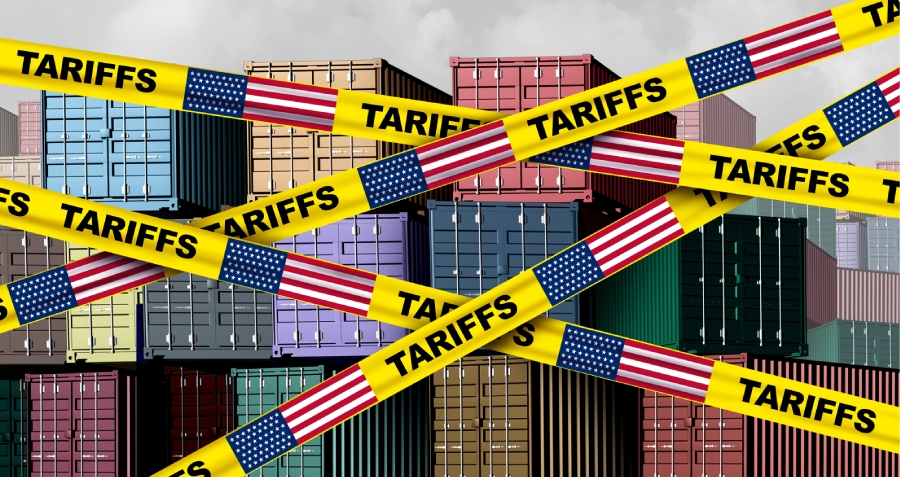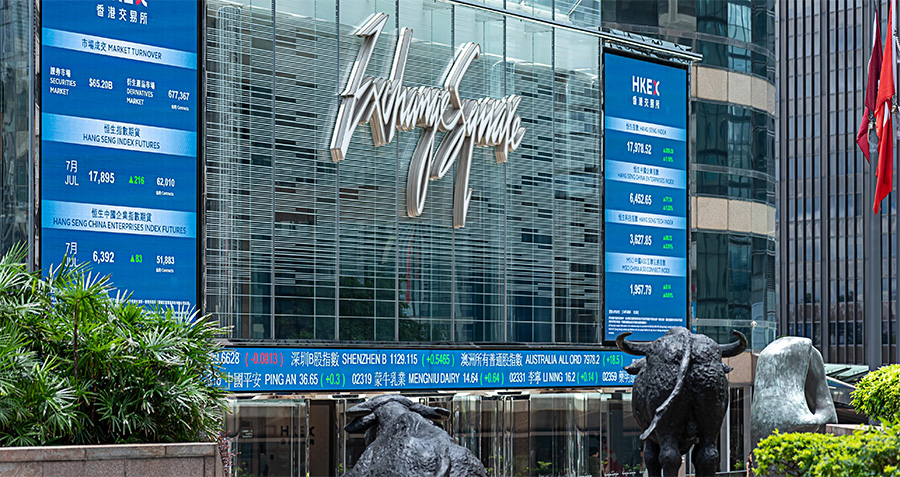On April 2, termed ‘Liberation Day’ by the US administration, US President Donald Trump unveiled a sweeping set of tariffs impacting vast swathes of the global economy. China initially received an additional 34% blanket tariff on its exported goods, with threats of further escalations, adding to several other tariffs already in place.
China reacted to the initial tariff with a slew of countermeasures, including matching levies of their own on US goods, greater export controls on rare earths and multiple strong condemnations of the actions. “The US move is not in line with international trade rules, seriously undermines China’s legitimate and lawful rights and interests, and is a typical unilateral bullying practice,” China’s Finance Ministry said.
On the other hand, according to a White House statement, “These tariffs adjust for the unfairness of ongoing international trade practices, balance [the US’] chronic goods trade deficit, provide an incentive for re-shoring production to the United States, and provide our foreign trading partners with an opportunity to rebalance their trade relationships with the United States.”
Whichever way the issue is viewed, what is abundantly clear has been the immediate global economic turmoil, a stock market roller coaster ride not seen for many years and a re-evaluation by many countries of their economic relationship with the US.
“For quite some time many thought that Trump’s talk of tariffs might just be a bluff, but it is now abundantly clear that he is serious,” says Li Wei, Professor of Economics at CKGSB. “Nobody knows how big the tariff war will become and to what scale this will trigger retaliation from trade rivals, and this has created huge uncertainty in markets globally.”
The tariffs
The April 2 announcement included a universal 10% tariff that will apply on almost all US imports and so-called “reciprocal” tariffs which vary by country and severity. There were 57 named recipients of the reciprocal tariffs, although the European Union tariff applies to all 27 member countries.
According to the US administration, named countries were identified as trade offenders, based on their bilateral trade surpluses with the United States, perceived tariff asymmetries and other barriers to US exports. Several industries and commodities, such as semiconductors, critical minerals and pharmaceuticals, as well as those already covered by existing tariffs—steel, aluminum and autos—are exempt from the new tariffs.
China’s initial 34% reciprocal tariffs are on top of existing 25% Section 301 tariffs and 20% fentanyl-related tariffs. Taking Most-Favored Nation (MFN) costs into account, adding the new tariffs could mean some Chinese goods are subject to a tariff of up to 80%, even before any further retaliatory increases.
The EU received a blanket 20% tariff, the African nation of Lesotho received a 50% tariff, the highest of any globally, and many of the countries in Southeast Asia, which are key parts of China’s supply chain were also hit with particularly high rates—e.g. Vietnam 46% and Cambodia 49%.
Goldman Sachs estimates that the current Trumpian measures could lower China’s real GDP growth rate by as much as 2 percentage points.
China’s tariffs on US goods will particularly affect US agricultural goods and farming machinery. The country has also imposed export curbs on many rare earth minerals and some rare earth derivative products, and has imposed restrictions on around 30 additional US companies, mostly defence-related.
“Neither side wants a full on trade war right now, even though both have reasons to sustain trade conflict into the future,” says George Magnus, Associate at the China Center at Oxford University. “China’s response was, however, more punchy than people expected, and shows both pique at the US and a call to arms for others to resist the Trump administration.”
But many other countries, particularly those in Southeast Asia, are not in a position to take a robust position such as China’s.
“Although the US-China relationship is on the cusp for now, some other nations have indicated they want to negotiate with the US to lower tariffs and or discuss trade arrangements that are more US-friendly,” says Magnus. “These include Vietnam, Indonesia and Cambodia—all key to China-centric supply chains.”
The tariffs and associated pressures are inevitably going to further impact on the global supply chain network as it stands, with potential shifts towards both so-called ‘friendshoring’ as well as greater fragmentation depending on different responses to the tariffs.
The impact
There is no doubt the the application of tariffs will continue to have a huge impact worldwide, and the reaction in global markets was immediate. Europe’s stock benchmark fell 12% over the first three days after the tariffs were announced, Wall Street tumbled 10% in two days, Thailand’s benchmark dropped to a 5-year low and Indonesia’s plunged 9% upon reopening after a week-long break.
As for how this situation plays out for China and the US, it is likely to be a matter of which is the more vulnerable and fragile and which has the depth and capability to handle the pressure. But the traditional economic view would be that this is a situation in which everyone loses out.
“Trade wars are never good, but this one comes at an awkward time for China, when monetary and fiscal policies are being honed to try and bolster economic growth in the wake of the National People’s Congress and hit an elusive 5% GDP growth target,” says Magnus.
The tariffs are sure to have an impact on business and consumer confidence in China, neither of which are especially robust.
“The government has already said it would take measures to strengthen consumption, and to borrow more to help sustain economic growth,” says Magnus. “It may now have to do more of both, but the devil will be in the details, and it remains to be seen if the government is prepared to switch horses from industrial policy and export led growth, to a more consumer type of expansion.”
As part of China’s centralized system, which has the ability to deal with problems in a unified and coordinated way which is not possible in a full market economy, the Chinese central bank is in a position to allow some currency depreciation to mitigate the tariff impact, although it may not be their preferred approach.
A purported fundamental long-term goal of the US tariffs and the associated tax cuts is to rebuild the US’ manufacturing sector, an area in which China continues to dominate. There has been a slow exodus of some types of manufacturing from China as a result of the trade war, but the US is not currently in a position to replicate the low labor costs found elsewhere around the world, and in terms of high-tech manufacturing it is still several years behind China and would need to replicate China’s industrial chain to try and compete.
At the same time, although the US economy as a whole has, until recently, appeared fairly robust in its growth, the tariffs are likely to have a negative effect on its economy. According to a Center for Strategic and International Studies (CSIS) projection, the April 2 tariffs may reduce US GDP by 1%, equivalent to roughly $300 billion, prices will rise by 9.5%, while nominal wages would increase by 8.6%, resulting in a drop in real wages. Additionally, the argument is that the tariffs functionally act as a consumption tax, meaning that even if the tax cuts they are meant to fund are made, lower income households will be disproportionately impacted.
“The result is a policy that shifts the fiscal burden down the income ladder, shafting the cost burden onto working households while delivering gains to those already at the top,” wrote CSIS analysts in an April report.
“It’s most likely there will be a much slower US economy this summer and fall, if not a recession, and that this along with the consequences of fear and uncertainty will undermine economic growth and confidence in many other nations,” says Magnus.
Another major point of contention between the two relates on the one hand to China’s control over the rare earths supply chain, in which it has 60% of global resources and refines 90% of the minerals, and on the other, the US’ ability to limit China’s access to key parts of the semiconductor supply chain. China has already responded by further limiting US access to rare earths, and this will certainly have a short-term impact, but whether this alone will be enough leverage to shift the US’ current position is unlikely.
“It is obviously a nuanced discussion,” says Guillaume Pitron, author of The Rare Metals War: The Dark Side of Clean Energy and Digital Technologies. “But having a complete access to and mastery of the semiconductor chain, including lithography machines, is probably a greater advantage than having rare earths leverage.”
A cloudy future
For the US, it feels like the lessons learned from previous applications of tariffs have almost been forgotten. President Ronald Reagan cautioned in 1987 that “At first, when someone says, ‘let’s impose tariffs on foreign imports,’ it looks like they’re doing the patriotic thing by protecting American products and jobs. And sometimes for a short while it works—but only for a short time.”
He went on to detail the downward spiral seen during the Great Depression, in part as a result of the tariffs signed into law in 1930 that lead to increased retaliation from trading partners, resulting in higher trade barriers, less competition and higher prices at home. In the end, Reagan concluded, “the worst happens: markets shrink and collapse; businesses and industries shut down; and millions of people lose their jobs.”
It is too soon to judge if the US tariff strategy will succeed in pushing other nations to accede to its demands, but the short-term goal seems to be a US-China deal in which the Americans could boast the upper hand. “It is still quite likely that the US and China will, at some point, sit down to negotiate a deal to soften the tariffs and purchase more from one another,” says Magnus.
Looking longer-term, much will depend on whether the high tariffs are temporary or permanent and which countries are prepared to negotiate with the US.
“Businesses will adapt and life will go on,” adds Magnus. “To the extent that the global trading system is being shocked into more protectionism, I think higher costs and greater inefficiencies will be part of the fragmenting global economy, and that firms will act more regionally and locally than in the past.”




















